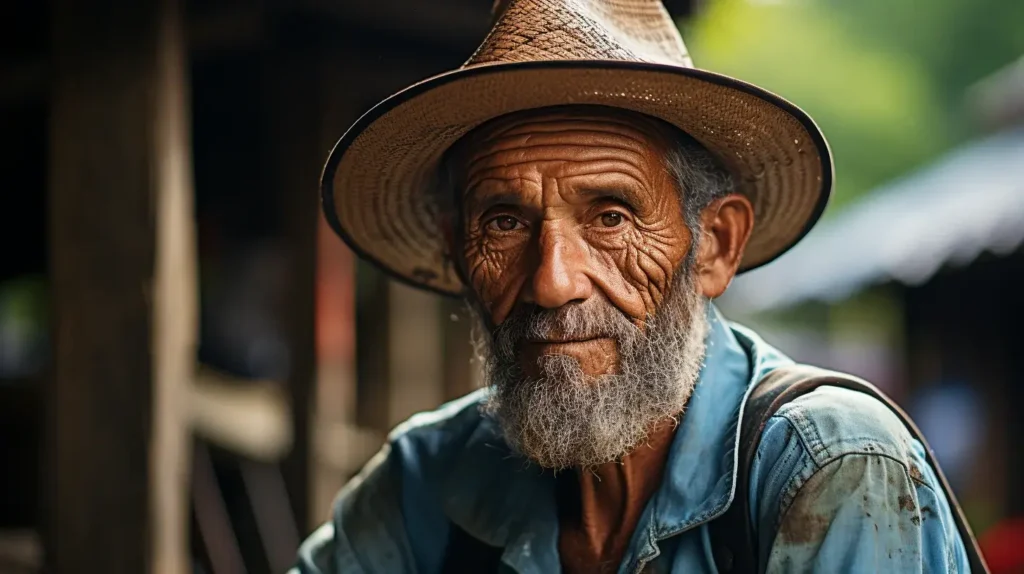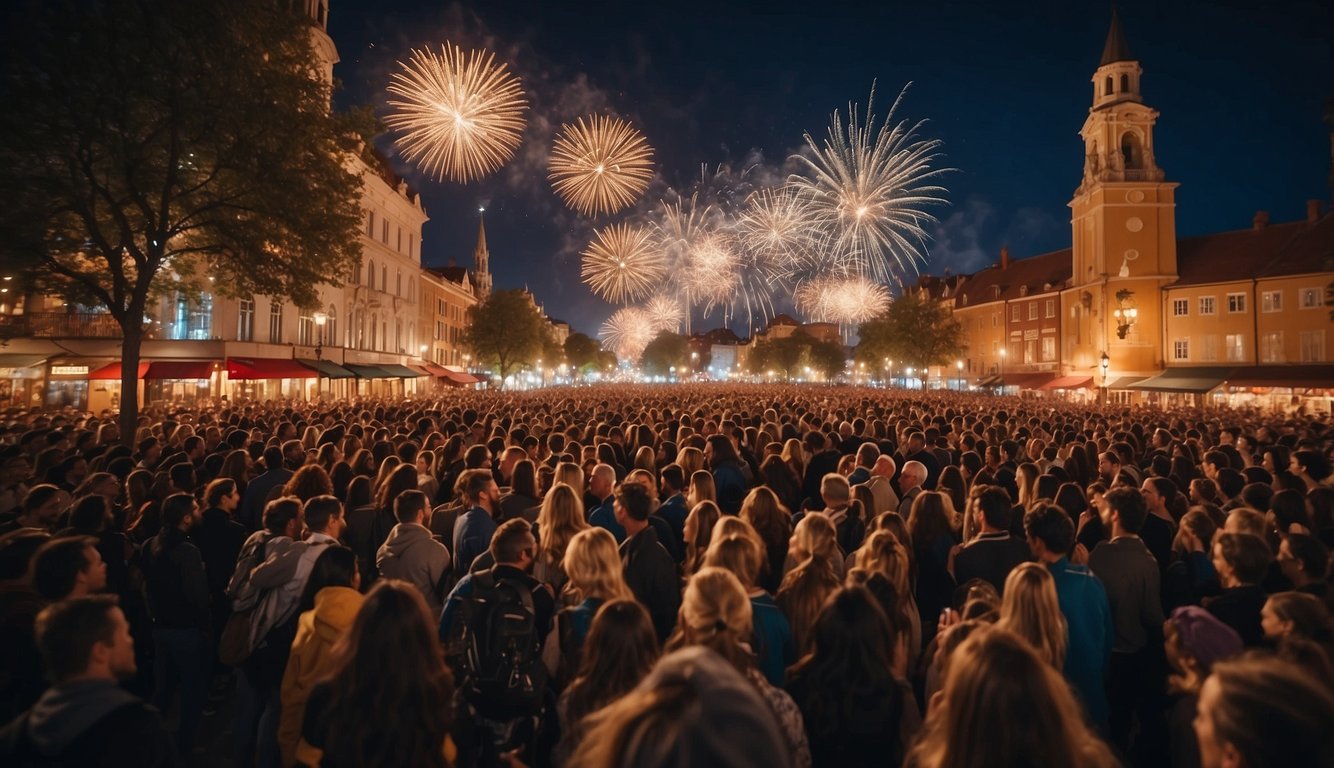Costa Rica observes its National Independence Day on the 15th of September. This day marks the occasion when Costa Rica, along with several other Central American countries, announced its independence from Spanish rule in 1821. It is a day that reflects freedom and showcases the nation’s historical journey.
The celebrations are symbolic, from the national flag waving to the reenactments of carrying the “Freedom Torch.” Costa Ricans pay homage to their nation’s autonomy through various cultural festivities. It’s a day that unites communities, with schools, streets, and homes draped in red, white, and blue, echoing the Costa Rican pride.
The occasion has also become a platform to acknowledge Costa Rica’s development. It serves as a commemorative event and an opportunity to foster patriotic spirit among the citizens, educate the younger generation about the historical significance, and showcase the country’s commitment to democracy and peace.
Key Takeaways
- Costa Rica’s Independence Day celebrates the country’s liberation from Spain on September 15, 1821.
- Cultural traditions and patriotic displays are central to the nationwide festivities.
- The day underscores Costa Rica’s historical and continued dedication to democratic values and peaceful living.
Historical Background

We explore the rich tapestry of events that led to Costa Rica’s liberation from colonial powers, marking September 15 as a pivotal date in their calendar. This historical overview includes the initial separation from Spanish rule to the symbolic Independence Torch and the significant involvement of other Central American nations.
Origins of Costa Rica’s Independence
Under Spanish rule, our lands experienced significant changes, but the winds of freedom were blowing towards us by the early 19th century. Influenced by wider global events, including Napoleon’s conquest destabilizing the Spanish Empire, the entire region began to feel the pull toward self-governance. By 1821, Central America was ready to claim its independence; a historical shift was emerging.
Independence Torch and the Act of Independence
The Independence Torch symbolizes the freedom we gained from Spanish colonial rule. Following the declaration of independence on September 15, 1821, news traveled slowly; it took over a month for the message of liberation to reach the remote areas of Costa Rica. The Act of Independence, once received, marked our official break from Spain and the dawn of a new era of self-determination for the people.
Role of Central American Countries in Independence
Within the Federal Republic of Central America framework, the Central American countries—including Guatemala, El Salvador, Honduras, and Nicaragua—played a pivotal role in the region’s quest for autonomy. Their joint declaration of independence from Spain signified a collective bid for freedom. Together, we navigated the path toward building individual nation-states while cherishing our shared history and interconnected goal of Independence Day celebrations.
National Celebrations

In Costa Rica, Independence Day is a vibrant national holiday filled with a festive atmosphere that embodies our unity and national pride.
Festivities and Traditions
We come together each year on September 15th to celebrate our independence with various festivities that symbolize our nation’s rich history and vibrant culture. Parades sweep through the streets as young and old people participate in the Desfile de Faroles, or Lantern Parade, on the eve of Independence Day. This tradition features handmade lanterns, representing the 19th-century freedom torch arrival. On the day itself, the parades are a grand display of marching bands, dancers, and traditional costumes, reflecting the patriotism deeply ingrained in our hearts.
- Desfile de Faroles (Lantern Parade): Torch-like lanterns light up the night
- Parades: Joyous processions with school marching bands and dance troupes
Symbols of National Pride
During the celebrations, the national colors of red, white, and blue are prominently displayed in every corner, echoing the hues of our beloved Costa Rican flag. Citizens wear these colors with pride, and the air fills with the respectful tones of the national anthem, prompting moments of shared reverence. We proudly raise our flags high, underscoring their unity and freedom.
National Anthem: Echoes throughout the celebrations, sung with reverence
National Flag: Waved proudly by the people of Costa Rica
Cultural Displays and Performances
Our national pride continues with cultural showcases featuring folk music and traditional dances that have been passed down through generations. The streets come alive with the sound of music and the sight of dancers moving in unison. Traditional foods such as tamales and gallo pinto are savored, each bite a tribute to our heritage. These performances provide entertainment and educate and inspire, keeping the essence of Costa Rican culture alive.
- Music & Dance: Celebrating through traditional performances
- Traditional Foods: Tamales and gallo pinto highlighting our culinary history
Socioeconomic Impact

We recognize that the Independence Day of Costa Rica has profound effects beyond mere celebrations, significantly influencing both education and national identity as well as infusing the tourism sector and the broader economy with vitality.
Influence on Education and National Identity
We witness annually how Independence Day reinforces educational endeavors and national identity within Costa Rica’s cities, from San José to Cartago and Heredia. During this period, schools integrate lessons about Costa Rican history into their curriculum, emphasizing the importance of the event in shaping the nation’s character. Historical discussions and cultural activities illustrate the journey from colonialism to independence, fostering a strong sense of pride and identity among the youth.
- Topics Included in Educational Programs:
- Historical significance of Independence Day
- Key figures in Costa Rica’s quest for sovereignty
- Traditional practices that honor our cultural heritage
Contribution to Tourism and Economy
Our tourism sector benefits significantly from Independence Day, as it aligns with the peak time for visitors looking to experience our rich cultural traditions. Sites of historical importance, particularly in cities of the Central Valley such as Cartago, become hubs for cultural events, attracting both domestic and international visitors.
- Economic Beneficiaries:
- Hospitality businesses: Hotels and restaurants see increased patronage.
- Commercial development: Retailers benefit from the sale of memorabilia and traditional goods.
- Wildlife reserves: Spillover effect on attractions featuring Costa Rica’s diverse wildlife.
Through these observations, we understand that the celebrated marking of our independence is not only pivotal in shaping the Costa Rican ethos but also instrumental in bolstering the nation’s socioeconomic framework.
Contemporary Observances

Every 15th of September, we proudly uphold our vibrant traditions to commemorate our enduring freedom and democratic spirit. These contemporary observances are a testament to our pride as Ticos and our respect for the struggles that led to our independence from Spain.
Public Events and Activities
We attend numerous public events in the heart of San Jose and throughout Costa Rica. Patriotic parades dominate the streets with a sea of red, white, and blue as schoolchildren dressed in formal attire march with pride. The air is filled with the sound of traditional and contemporary music from impromptu concerts as local artists display their works. Activities for all ages abound, and when night falls, the sky lights up with dazzling fireworks.
Educational Aspects and Participation
Our schools play a pivotal role in engaging schoolchildren in learning about the historical significance of our independence. Classrooms turn into hubs of discovery, where stories of past struggles, sacrifices, and wars illuminate the revolutionary ideals that have shaped our nation. Through drama and reenactments, we ensure that the essence of our ancestors’ courage is passed down and never forgotten.
Reflection on Historical Significance
We reflect on the historical significance of our independence from Spain, thoughtfully acknowledging the periods of unrest that led to our freedom. Discussions and public forums provide spaces to contemplate the nation’s past and recommit to the ideals that have allowed us to maintain peace for nearly two centuries. We remember the sacrifices made for our liberty, affirming our intent to uphold these values for future generations.
Our Opinion

As we commemorate Costa Rica Independence Day, we’re reminded of the cultural significance of this national holiday. It’s a day that epitomizes our unity as Costa Ricans and underscores our deep national pride. Each year on September 15, we join together to honor the moment Costa Rica claimed its sovereignty from Spanish rule.
Traditions such as the lantern parade reflect both historical reverence and contemporary celebration in our celebrations. Our schools and public spaces become a vibrant tableau, alive with the colors of our national flag and the sounds of marimbas. It’s a day on which we pause to remember our collective history and invite the younger generation to embrace their heritage.
Despite any differences, this day imbues us with a sense of collective national pride. The narratives of freedom and independence that we share bind us, as we recognize our fortunate position in a peaceful and democratic society.
By recognizing Costa Rica’s Independence Day, we celebrate our past and reaffirm our commitment to the values that continue to shape our future.
FAQ – Costa Rica Independence Day
What is Costa Rica Independence Day?
Costa Rica Independence Day is celebrated on September 15th each year. It marks the day in 1821 when Costa Rica, along with other Central American countries, declared independence from Spain.
How is Costa Rica Independence Day Celebrated?
The day is celebrated with patriotic parades, cultural events, and traditional music and dance performances. Schools and communities participate in marches, and buildings are adorned with Costa Rican flags and blue, white, and red decorations.
What are Traditional Activities on Costa Rica Independence Day?
Traditional activities include the national torch run, which symbolizes the journey of the news of independence. Additionally, there are school parades known as ‘Desfiles’, and the singing of the national anthem at public gatherings.
If you enjoyed reading about Costa Rica Independence Day, check out our other articles:
- Grenada Independence Day 2024: Celebrating National Identity and History
- Estonia Independence Day 2024: Significance and Celebrations
Feel free to also check out our other Articles from the category “Independence Day“ and don’t forget to follow us on Pinterest.






